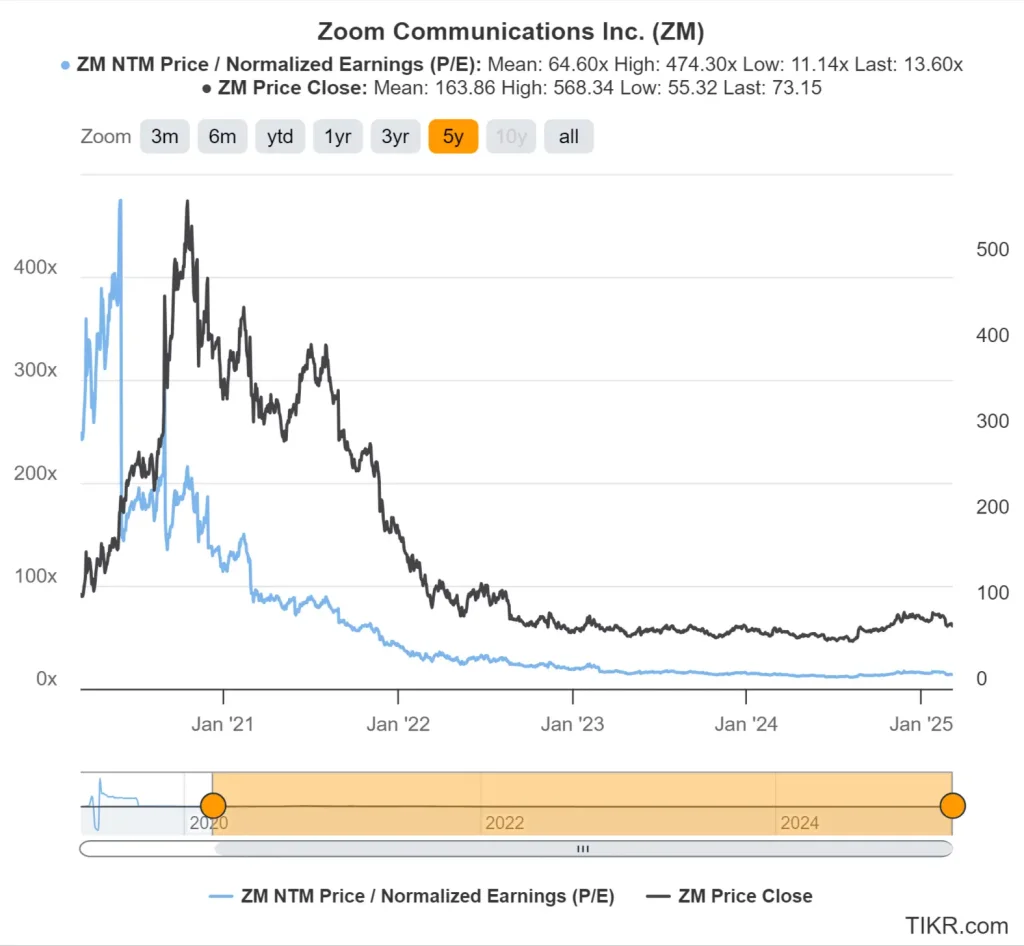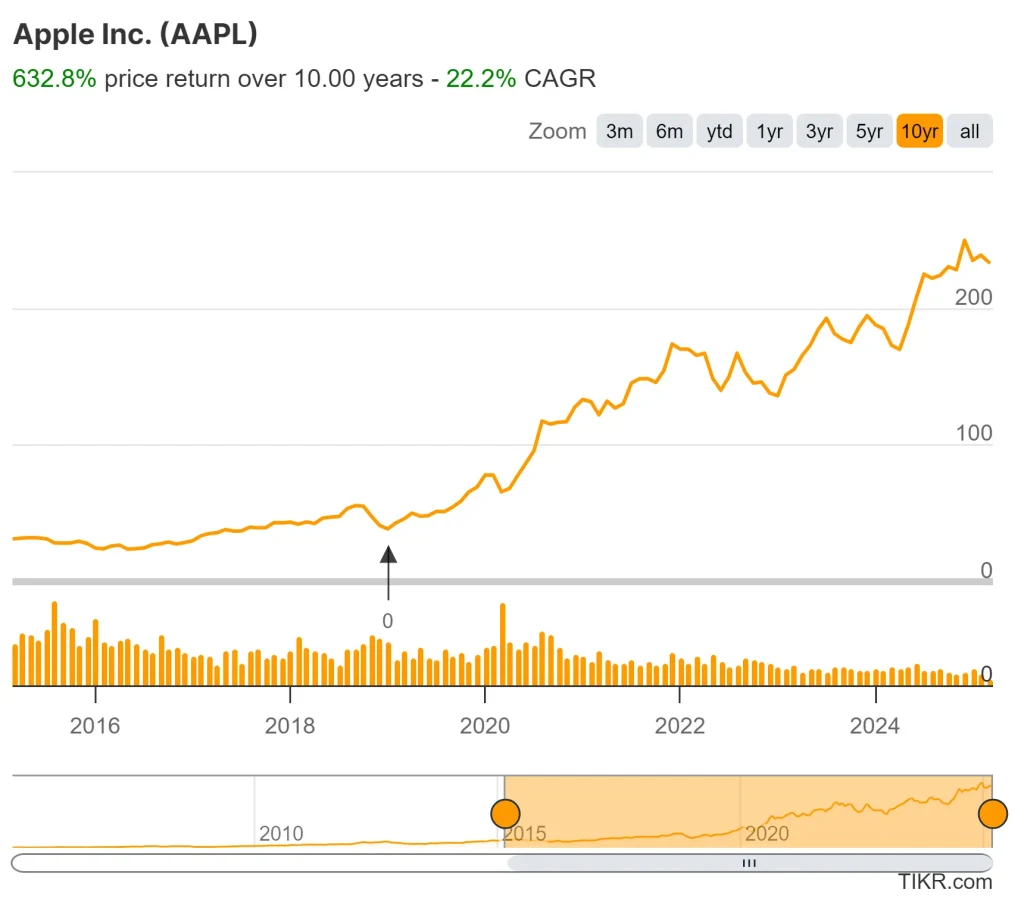Legendary investor Peter Lynch once said, “Selling your winners and holding your losers is like cutting the flowers and watering the weeds.”
Typically, long-term investors should sell their stocks when the fundamentals call for it, not based on their emotions.
This guide walks through the best reasons to sell a stock and how you can apply these ideas to managing your own portfolio.
Table of Contents:
- Key Reasons to Sell a Stock
- Other Situations Where Selling Makes Sense
- When NOT to Sell a Stock
- How to Build a Disciplined Selling Strategy
- TIKR Takeaway
Let’s dive in!
Key Reasons to Sell a Stock
Your Investment Thesis Is Wrong
Every stock purchase should be based on a clear investment thesis.
If that thesis turns out to be wrong, then it probably makes sense to sell the stock.
Investors might be tempted to hold onto the stock because they invested a lot of time researching the stock and money, but it’s probably best to just consider these as sunk costs and move on.
If a company keeps missing revenue or earnings projections, competitors gain market share, or management changes direction, it may be time to sell.
For example, if an investor bought a retail stock expecting rapid e-commerce expansion but later found that the company kept missing revenue projections because management struggled with execution, then the original thesis might be broken.
Expected Returns Have Deteriorated
Many investors hold stocks out of habit, even when the expected returns no longer justify the risk.
The stock market historically returns around 8% per year, so if it looks like a stock’s future returns will fall below this benchmark, it may be better to reallocate capital.
Several factors can indicate lower future returns:
- Revenue and earnings stagnation: If a company’s sales flatline or decline, then the company’s future growth may disappoint. A stock like IBM struggled with growth for years despite investor optimism.
- Margin compression: If cost growth outpaces revenue growth, then the company is going to see shrinking profit margins. Typically, companies that see shrinking profit margins have poor competitive advantages. For instance, if a software company faces pricing pressure from competitors, its ability to sustain high returns declines.
- Worsening balance sheet: If debt levels rise faster than earnings, then the company might see increased financial risk. Investors in General Electric saw how excessive debt led to a prolonged downturn.
- Management missteps: Poor capital allocation, shareholder-unfriendly decisions, or frequent earnings misses lower confidence in future returns.
Analyze stocks quicker with TIKR >>>
A disciplined investor compares a stock’s projected return against other opportunities. If it looks like the stock will deliver well below 8% annual returns, then it might make sense to sell.
Better Investment Opportunities Exist
Opportunity cost is real in investing. Holding onto a stock with limited upside prevents you from investing your money in better opportunities.
For instance, if an investor owns a consumer goods stock projected to return ~6% annually, but finds a tech stock with a stronger balance sheet and a projected 15% annual return, reallocating capital can increase long-term wealth.
This is why great investors constantly scan the market. Warren Buffett sold many of his airline stocks in 2020 when he saw better uses for Berkshire Hathaway’s capital. By exiting low-return positions, investors can redeploy capital into higher-growth opportunities.
Other Situations Where Selling May Make Sense
Overvaluation
When a stock trades significantly above its intrinsic value, selling locks in gains and reduces downside risk.
Typically, it’s best to let your winners run, but if a stock is well overvalued, it probably makes sense to sell.
For example, in 2021, Zoom Video Communications traded at over 100 times earnings due to pandemic-driven demand. Investors who sold when the stock was overvalued avoided the sharp decline that followed when the company’s growth slowed down.

Valuation metrics such as price-to-earnings (P/E) can help determine whether a stock’s price aligns with realistic growth expectations.
Portfolio Management Considerations
Investors should periodically rebalance their portfolios to maintain diversification and manage risk exposure. If one stock grows too large within a portfolio, trimming the position can prevent overconcentration.
For example, if an investor bought Tesla early and the stock grew to represent 50% of their portfolio, reducing the position could lower risk while keeping exposure to the company’s long-term potential.
Tax Considerations
Tax strategy can also play a role in selling decisions.
Tax-loss harvesting is when investors sell losing stocks to offset capital gains taxes.
This is rather complex, and might not make sense for most investors. But, if you’ve been investing for a few years and you have a big position that’s lost money, it might be worth looking into.
Find the best stocks to buy today with TIKR >>>
When NOT to Sell a Stock
Short-Term Volatility
Stock prices fluctuate daily, but short-term moves often have little to do with a company’s long-term value. Many investors panic and sell at the wrong time, only to watch the stock recover.
For example, Apple dropped nearly 40% in 2018 due to fears of slowing iPhone sales. Investors who held on saw the stock more than triple over the next five years. A short-term dip does not mean a company’s fundamentals have changed.
You can see how small this dip looks now, but these kinds of dips happen all the time when we’re investing. Often, it’s best to not react and continue holding.

Before selling, ask:
- Has anything changed about the company’s long-term competitive advantage?
- Are earnings and revenue trends still mostly intact?
- Is the market overreacting to temporary news?
Selling based on short-term price swings often leads to regret.
Market Timing
Trying to sell at the peak and buy back at the bottom sounds great in theory but it rarely works. Even professionals struggle with timing the market.
Instead of trying to predict market tops and bottoms, investors should focus on business fundamentals and valuation.
If a company still offers strong returns, holding through market cycles often leads to better results.
Following the Herd
Many investors sell because they see others selling. This behavior often leads to selling at the worst time.
In March 2020, the market crashed due to pandemic fears. Many investors panicked and sold stocks at steep losses. Those who held through the volatility saw the market recover within months.
Herd mentality often leads to poor decisions, while independent thinking can create better results.
See what billionaire investors are buying today with TIKR >>>
How to Build a Disciplined Selling Strategy
Set Sell Rules in Advance
Investors should establish rules for what conditions they’d sell a stock before buying a stock.
This can help to remove emotions from the decision-making process.
Here are some examples of disciplined sell rules:
- Sell if earnings decline for three straight quarters without a clear turnaround plan.
- Sell if valuation exceeds 1.5x historical averages and future growth does not justify the valuation premium.
- Sell if a better investment opportunity offers double the expected returns or more with less risk.
Use Trailing Stop Losses Carefully
A trailing stop loss allows investors to protect gains while letting winners run. For example, setting a 20% trailing stop means selling automatically if the stock drops 20% from its recent high.
This strategy prevents major losses but it also requires careful placement to avoid being stopped out on normal volatility.
Investors should also be careful with stop losses, because if a good stock falls in price, investors might just want to buy more shares.
By applying a structured sell strategy, investors maximize long-term returns while avoiding common pitfalls.
FAQ Section
How do you know when to sell a stock for profit?
Investors should sell a stock for a profit when it becomes significantly overvalued, when its future return potential declines, or when a better opportunity arises. Selling based on valuation metrics and fundamentals ensures profits are locked in without missing further upside.
What are the signs that you should sell a stock?
Signs include slowing revenue growth, declining profit margins, a weakening competitive position, or a drop in expected returns below market averages. If the company’s financials or industry outlook deteriorates selling may be the best move.
Is it better to sell a stock when it’s high or wait?
Selling when a stock is overvalued relative to its future earnings potential is a smart strategy. However, holding strong businesses for the long run often generates the best returns. The decision should depend on valuation, fundamentals, and available investment alternatives.
What is the best strategy for selling stocks?
The best strategy involves setting clear sell rules, reviewing stocks regularly, and selling based on valuation and business fundamentals instead of emotions. Using a disciplined approach prevents panic selling and maximizes returns.
Why do most investors sell stocks too early?
Many investors sell too early due to fear, market volatility, or impatience. Emotional decisions often lead to missing out on long-term gains. Investors who focus on a company’s long-term value rather than short-term price swings tend to achieve better results.
TIKR Takeaway
Knowing when to sell a stock can be just as important as buying the right stock.
It’s best to sell a stock when your investment thesis is wrong, expected returns fall below market averages, or you have better opportunities to invest your money elsewhere.
The TIKR Terminal offers industry-leading financial data on over 100,000 stocks, so if you’re looking to find the best stocks to buy for your portfolio, you’ll want to use TIKR!
TIKR offers institutional-quality research for investors who think of buying stocks as buying a piece of a business.
Disclaimer:
Please note that the articles on TIKR are not intended to serve as investment or financial advice from TIKR or our content team, nor are they recommendations to buy or sell any stocks. We create our content based on TIKR Terminal’s investment data and analysts’ estimates. We aim to provide informative and engaging analysis to help empower individuals to make their own investment decisions. Neither TIKR nor our authors hold any positions in the stocks mentioned in this article. Thank you for reading, and happy investing!






